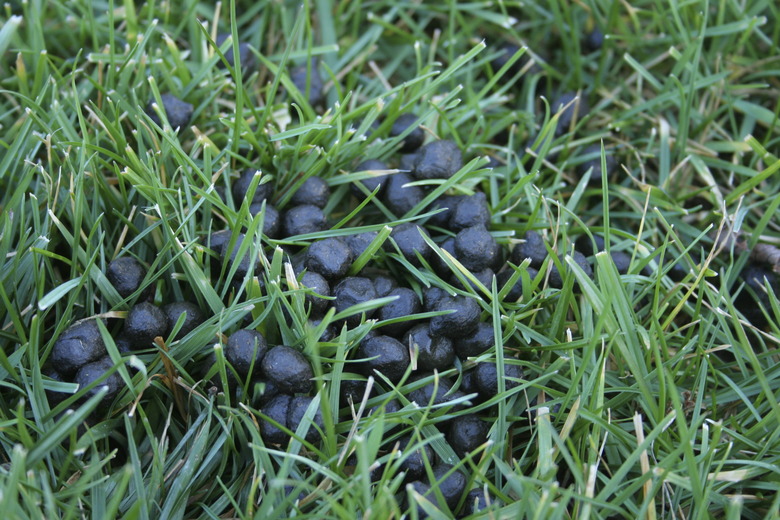Are Deer Droppings On The Lawn A Good Fertilizer?
Looking out at your lawn to see deer grazing can be either a blessing or a curse, depending on how much of your grass and plants the deer consume. Even the welcoming homeowner will find the lawn nearly impassable if deer spend a lot of time in the area. Whether to leave droppings in place or remove them may be a matter of personal taste. The benefit of deer droppings as a fertilizer depends on the nutrient content of the food the deer eat.
Advantages of Deer Droppings
Deer consume nothing but grass, plants and vegetables. The waste they drop is directly affected by the food they take in. In wild settings, deer often feed on dried foliage with little nutrient content and produce low-nutrient waste. Rich green plants such as lawn grasses, high in nitrogen, result in additional nutrients in deer waste. Even low-level nitrogen promotes new growth and helps keep grass green. Cost-free deer droppings on the lawn provide won't replace stronger fertilizers, but you can avoid the chemicals inherent in many manufactured fertilizers and get better control of what gets into your soil and grass.
Disadvantages of Deer Droppings
Because deer do not discriminate where they drop their waste, many lawns suffer from too many droppings in one area. If solid and liquid waste accumulate, this can lead to dead patches in the lawn or scorched grass similar to fertilizer burn or damage caused by pet waste. Heavy piles of deer droppings — jelly-bean sized pellets that vary in color depending on the deer's food — can also prevent enough sunlight and moisture from reach the grass beneath to penetrate to the roots and blades of the plant. This can lead to dry or fading areas of the lawn, where growth will be stunted or stop altogether.
Using Deer Droppings
If you choose to leave deer droppings on your lawn, use a garden rake to spread out the piles of droppings. Use gloves, and never touch the droppings. A rake distributes the existing nutrients across the entire area. You can also use a shovel or scoop designed to pick up dog droppings to move piles of deer droppings from one area to another, but keep the waste isolated from areas where children play or where edible crops are grown. Any tools used for deer dropping should be cleaned thoroughly before being used for other purposes.
Safety Warnings
Deer droppings can sometimes carry disease including E. coli. Never use deer droppings to fertilizer fruits, vegetables or anything intended for human consumption. When handling or working with droppings, wear protective gloves and wash your hands immediately afterward, before touching any area of your body or other objects. Rinse off or wash all shoes and clothing that come in contact with the droppings so you don't bring any potential contamination into your home.
